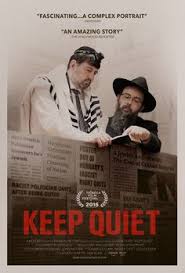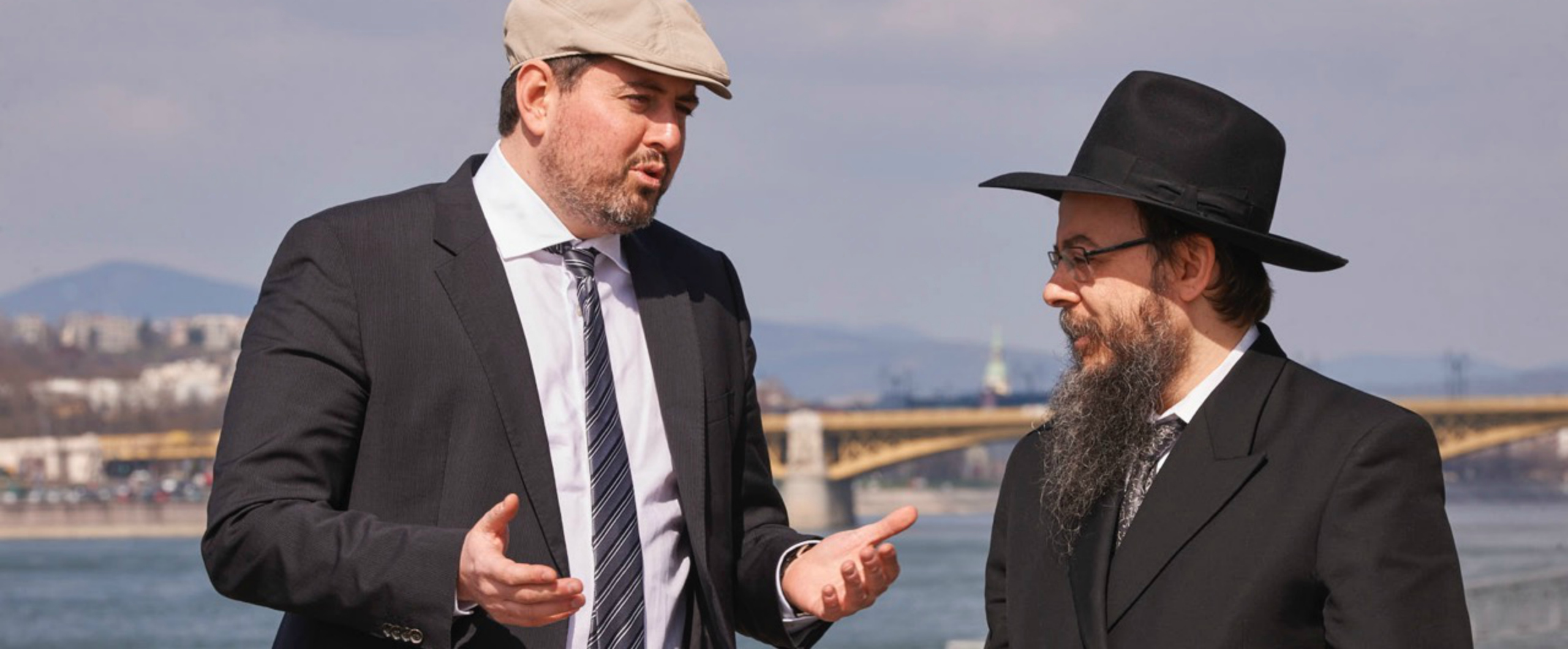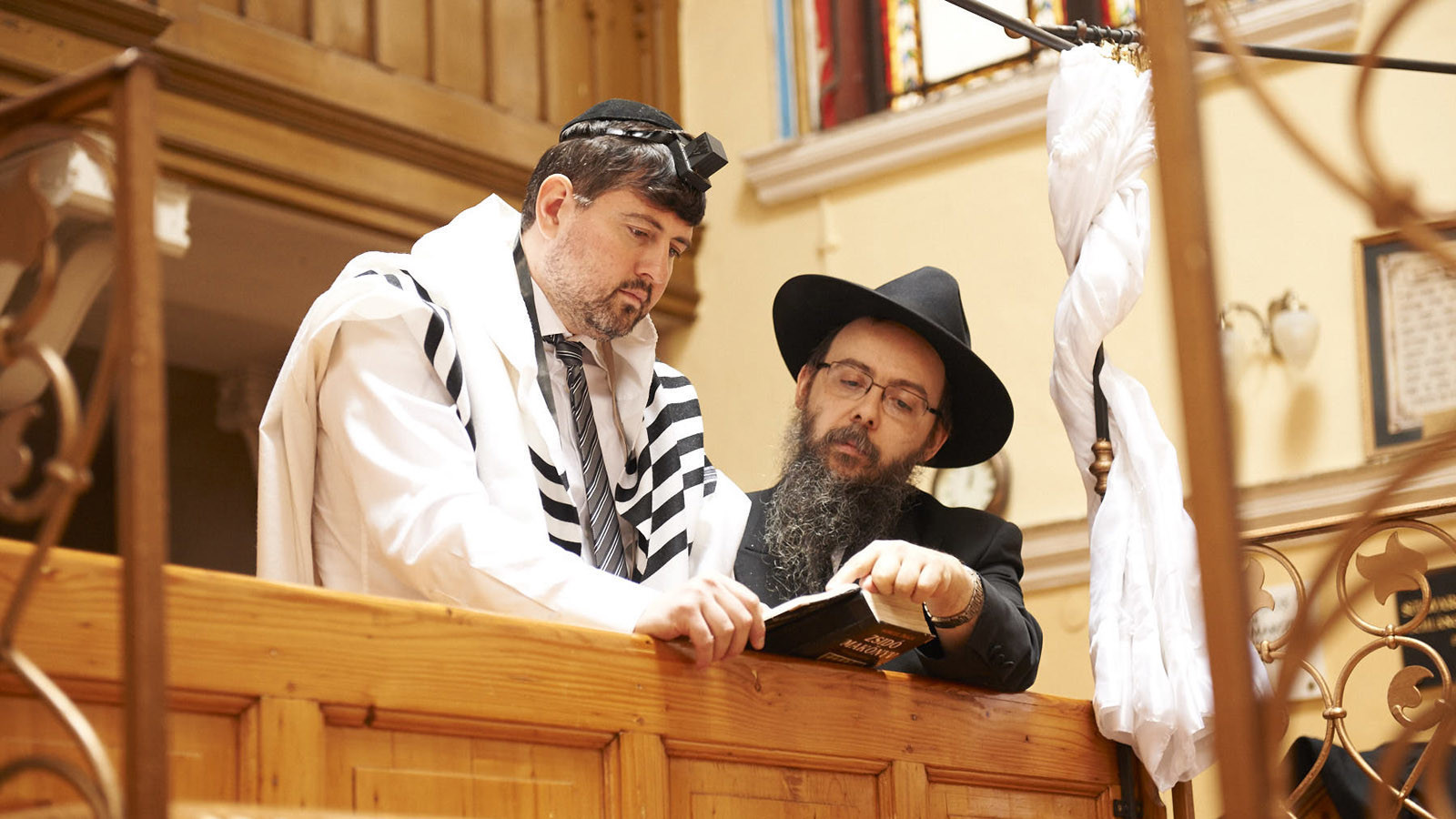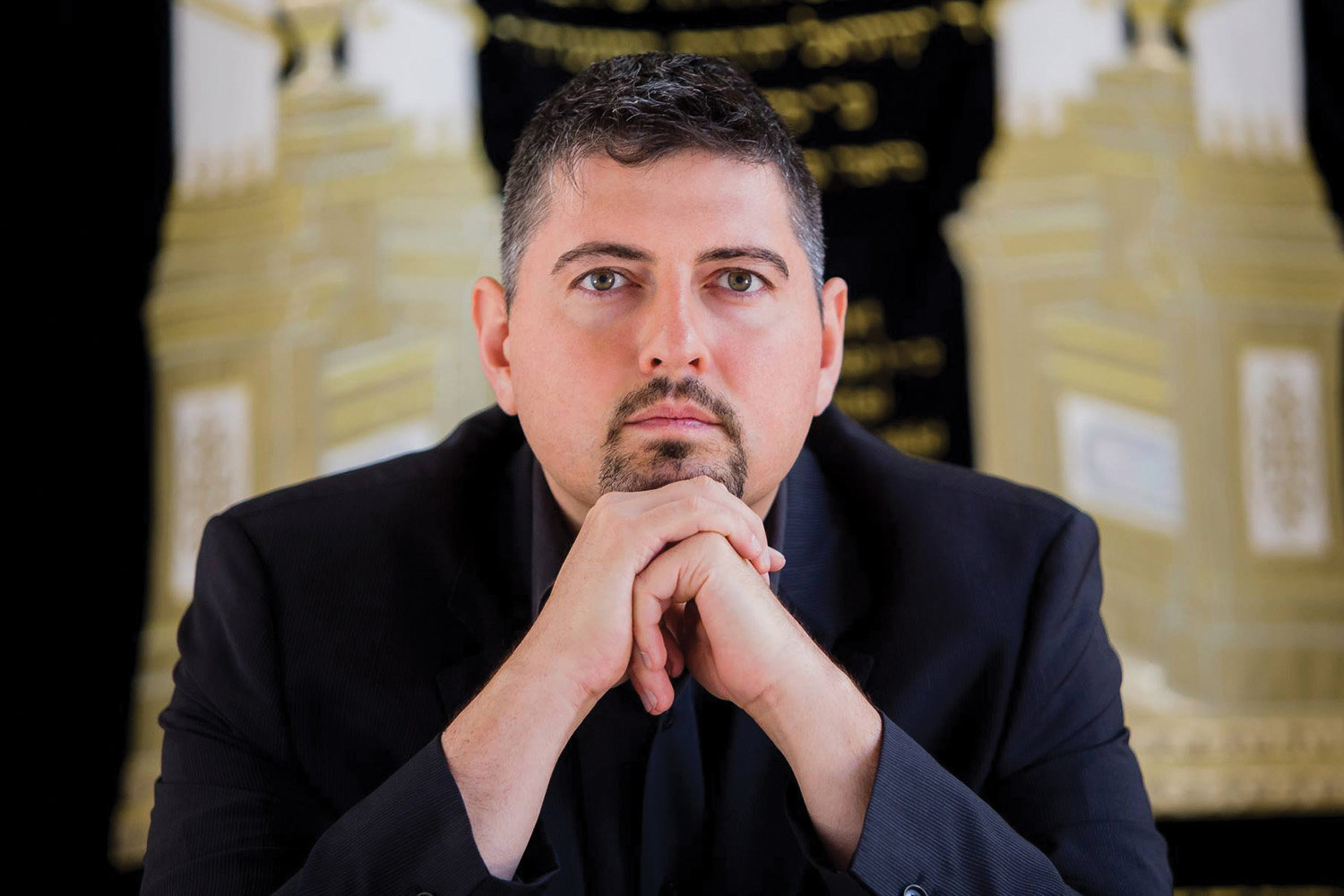From a holocaust denier to practicing Orthodox Jew, is Csanád Szegedi just a wolf in sheep’s clothing?
 Directors: Joseph Martin and Sam Blair/2016
Directors: Joseph Martin and Sam Blair/2016
Street Date: May 16, 2017/Kino Lorber
Directors Joseph Martin and Sam Blair have found a fascinating story to present to us by way of a politician named Csanád Szegedi, from Hungary, who was elected to the European Parliament. A film that was named an “Official Selection” of the Tribeca Film Festival, Keep Quiet presents us a modern day portrait of possibly the greatest personal transition of a person in the modern day, or an example of the biggest wolf in sheep’s clothing.
Keep Quiet documents the rise of the ultra-right wing Hungarian political group Jobbik. One of the core leaders of this group was a man by the name of Csanád Szegedi. Having read a hard-right political magazine in High School, Szegedi gravitated towards even more extremism in college. This led to him helping to form Jobbik to counter the 2006 protests going on in Hungary against the Leftist government. Raised to be a nationalist, Szegedi espoused anti-semitic rhetoric, all but denied the existence of the Holocaust, and whipped up the people into a frenzy with messages of taking back “their” government. People from the European skinhead movement, “owners of weapons”, and Nazi sympathizers found a home in this growing movement. Eventually, other similar extreme groups rallied under the Jobbik banner to give them more power.
Csanád, in 2008, decided to rally more people to their cause by founding the Hungarian Guard, a militia inspired by a pro-Nazi Arrow Cross group that was complicit in the murder of many Jews in World War II. Szegedi understood the power of symbols, and their militia vests were covered in them, many resembling symbols inspired by the Nazis. Eventually he rose to be the number 2 man in the Jobbik party and won a seat in the European Parliament which further legitimized the party, and at age 26 gave Csanád the vision for his life: politics.
Keep Quiet doesn’t ultimately make a claim to which view of this man is the truth. It doesn’t need to. So whether Csanád Szegedi is a wolf in sheep’s clothing, or now a true sheep of Judaism, it will be determined much further down the road by what Szegedi does with his life.

In 2012, however, a man he was talking to confronted him with evidence that his maternal grandmother was actually a Jew who had been deported to Auschwitz. Knowing his grandmother had been adopted, and therefore might have an unknown Jewish ancestry, Csanád determined to find out more. To his surprise, his grandmother and mother had hidden their views and Jewish background for decades to avoid persecution in the very anti-Jewish culture in Hungary, where even the Nazi party had spoken of the ease of which Hungary had helped implement Hitler’s murderous plans.
The family that had “adopted” his grandmother was actually her mother’s brother, her uncle. Her name of Klein was actually the maiden name of her mother, and was thus raised in her true family. Csanád was floored by seeing the concentration camp tattoo on his grandmother’s arm that she had kept hidden through modest clothing for his 30 years. When the news of his background hit the papers, Csanád Szegedi’s political future and present was over.

What follows is a fascinating journey of a man confronting everything he has stood against and learning to embrace it fully. As he speaks with his grandmother and learns more, he is visibly moved. Looking for guidance after becoming a pariah to all he once knew, he turns to Rabbi Slomó Köves. Rabbi Köves is skeptical, but according to the Jewish faith, it is a sin to turn away anyone, especially a fellow Jew, away who needs help. While he is cautious , the Rabbi extends a hand of friendship to Csanád and begins to teach him Judaism, the way of “teshuva” (repentance) and how to make amends for all of the wrong he had done.
While we watch Csanád Szegedi take this journey, fully embracing Judaism, including getting circumcised at age 30, eating kosher, and practicing orthodox Judaism, many Jews around the world do not trust him. They see a charismatic man who used his oratory gifts to climb to power by stoking anti-semitic fears in his country of Hungary, and worry that after being thrown out of his own political party, he is simply jumping on their bandwagon as a means to gain more power for himself, rather than a true conversion, not only to the faith, but of someone who embraces the truth that the holocaust happened, and who fights to end such hate against the Jewish race.

His visit to Auschwitz is a moving moment as he discusses the Holocaust with a woman survivor named “Bobbi” who shares her story. Seeing how it confirmed everything he was told by his grandmother, we see a man who is overwhelmed by the sheer magnitude of truth that counters everything he had previously denied. Is he a true convert, though? As he sought to speak to various Jewish groups, he is met with much resistance. Rabbi Köves continues to be skeptical, but ultimately believes that he is a man in transition and sees true change. He is also a man who acknowledges that Szegedi has a long way to go to truly live out teshuvah.
Keep Quiet doesn’t ultimately make a claim to which view of this man is the truth. It doesn’t need to. So whether Csanád Szegedi is a wolf in sheep’s clothing, or now a true sheep of Judaism, it will be determined much further down the road by what Szegedi does with his life. The grace offered to such a man of hate by Rabbi Köves, has definitely had an impact, however, and demonstrates the power that love can have to win over even the hardest of hearts.
This film is a timely one as we see more and more political upheaval in the United States and Europe. Szegedi’s grandmother, when asked, was positive that such anti-semitism could definitely happen again, and would happen again. Szegedi asked what she did to avoid any confrontations after the war. Her answer was to simply, “keep quiet”. I’m not sure Csanád Szegedi will be able to.
Keep Quiet is being released on DVD by Kino Lorber. It is presented in 2.35:1, 16×9, is 96 minutes, and is in 5.1 surround sound, and color. It is filmed in English and Hungarian with optional English and English SDH subtitles. The only “extras” contained in the DVD is the film’s trailer.
The images used in this review are used only as a reference to the film and do not necessarily reflect the visual quality of the DVD.


